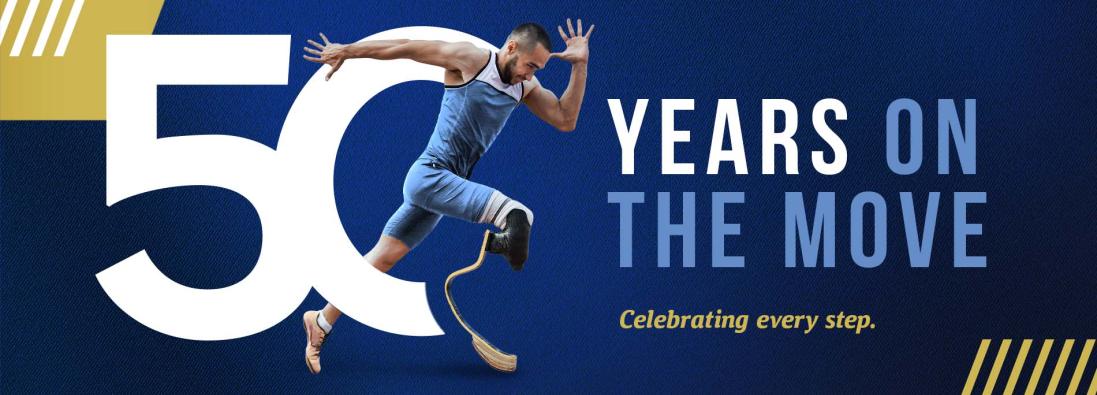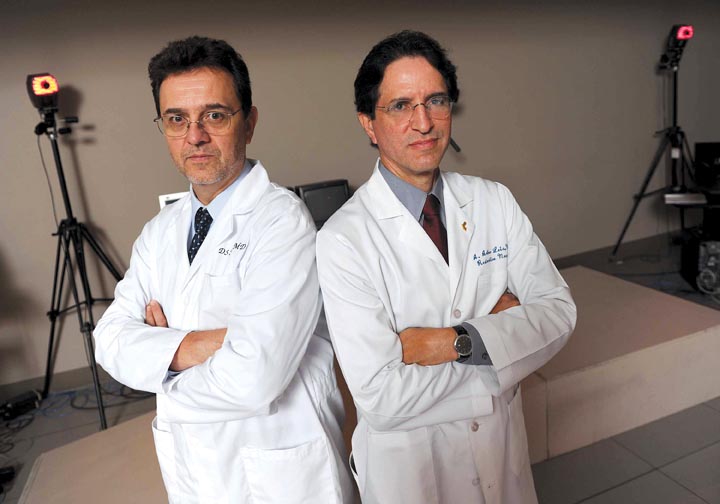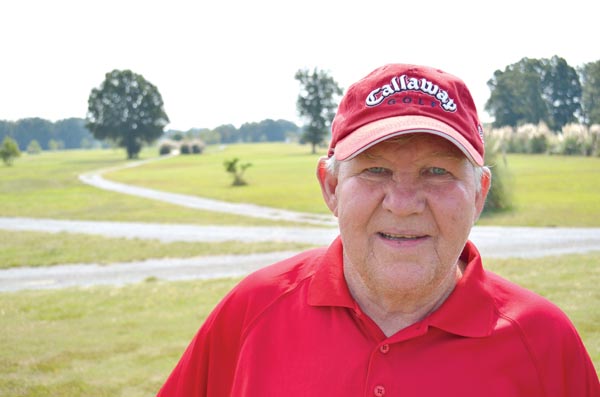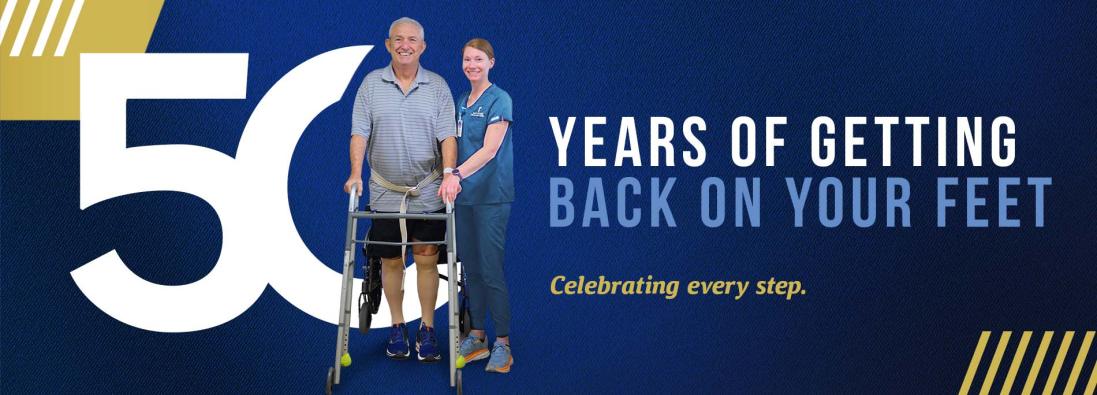


Ten years later, Charlie Gibbs of Clinton still thinks: What are the odds?
“One of 200,000 mosquitoes bites me,” he says. And within days, he can’t move his arms or legs.
Doctors aren’t sure what to make of Gibbs’ mysterious symptoms. They check for heart attack, stroke and even the relatively rare Guillain-Barré Syndrome.
Then a blood test reveals the true villain—a tiny mosquito bearing a terrifying virus.
“I was the first person infected with West Nile virus (WNV) in Mississippi,” Gibbs says. “Aren’t I lucky?”
Today, Gibbs has plenty of company in the WNV survivors club, particularly after a record-breaking resurgence of the virus this summer. But in July, 2002, the African import was new to the American South, having invaded the United States via New York in 1999.
When Gibbs arrived at Methodist Rehabilitation Center for therapy, he had yet to learn why he was paralyzed.
But researchers there took note of the 56-year-old’s shrunken limbs and thought: This guy looks like he has polio. The hunch led to a stunning discovery for Dr. Art Leis and Dr. Dobrivoje Stokic, scientists for the hospital’s Center for Neuroscience and Neurological Recovery (CNNR).
After doing an exhaustive series of tests on Gibbs and two other paralyzed West Nile patients, the researchers became the first in the world to report that WNV can target the motor neurons of the spinal cord, causing muscle weakness, fatigue and a polio-like paralysis. And their discovery became breaking news in the New England Journal of Medicine, on the Web site of the Centers for Disease Control (CDC) and in some 700 media outlets across the country.
To some, a rehab hospital in Mississippi must have seemed an unlikely place for such groundbreaking work. But the researchers say it makes perfect sense if you consider Methodist Rehab’s clinical focus.
“In a rehab setting, it’s common to see people with polio-like syndromes,” Dr. Stokic said.
“So when we see scattered, flaccid paralysis, there is one thing that comes to mind—poliomyelitis,” added Dr. Leis.
As a neurologist whose specialty is electro-diagnostic testing, Dr. Leis brought another level of expertise to the mix. His sophisticated studies revealed the virus was targeting the grey matter of the spinal cord, causing symptoms eerily similar to the polio epidemic of the 50s and 60s.
The findings were later confirmed by autopsy results, yet the researchers initially had to defend the term West Nile virus poliomyelitis. Now, it’s part of the CDC classification system.
Identifying the Impact
In the decade since, Methodist Rehab scientists have published 14 manuscripts about WNV, and their detective work continues as they seek to learn more about a virus that has killed more than 1,400 Americans and sickened almost 36,000.
Lately, they’ve focused on the long-term ramifications of the infection, such as the debilitating fatigue first identified during a 2003 federally funded study done in conjunction with the Mississippi Department of Health.
Dr. Stokic, Methodist Rehab’s administrative director of research, said the study found that lasting fatigue affected about half of the study participants. About one in five said it was severe enough to impact their daily lives.
In the quest to find out why, MRC researchers have recently uncovered signs of central nervous system damage even in patients with mild cases of WNV.
Working with Dr. Axel Petzold, a University College of London’s Institute of Neurology expert, they examined first the spinal fluid and then the blood of a broad spectrum of WNV patients—including 35 with neuro-invasive diseases such as meningitis, encephalitis and poliomyelitis and 55 with less severe WNV fever.
“We found over one-third of patients with WNV fever had elevated proteins in their blood similar to biomarkers found in the blood of those with more serious forms of the disease,” Dr. Leis said. “And that implies that the proportion of patients with neuro-invasive disease is much higher than has been acknowledged by the CDC.”
Dr. Leis said both studies—published in 2010 and 2012 in the journal Muscle & Nerve—confirm what many WNV experts suspected.
“Anyone who has dealt with these patients understood even back in 2002 that there was no way that WNV fever was just another summer flu,” Dr. Leis said. “These patients have prolonged, disabling fatigue, sleep problems, recurrent headaches and difficulty concentrating and focusing attention, and this goes on for months after this so-called benign illness.”
To determine the extent of nervous system damage, Dr. Leis recommends West Nile virus patients with weakness undergo comprehensive electro-diagnostic tests.
“In addition to neurological examination, electromyography and nerve conduction studies are essential for a prognosis,” Dr. Leis said. “If the virus destroys a majority of cell bodies in the spinal cord, the patient may have permanent profound weakness, like in cases of polio.”
Being able to predict such an outcome helps decide appropriate therapy, Dr. Stokic said. “For example, a patient likely to remain in a wheelchair or have difficulty walking would need more extensive rehabilitation services than one with short-lived muscle weakness.”
More Mysteries to Unravel
Methodist Rehab researchers, along with Gabriella Szatmary, MD, PhD of Hattiesburg, also are examining the possible link between WNV and myasthenia gravis (MG), a correlation they recently presented to a New York Academy of Sciences meeting.
Oddly enough, Gibbs was part of that research, too. “It turns out the first patient that Methodist Rehab ever described with WNV poliomyelitis was also the first patient to develop MG several months later,” Dr. Leis said.
A type of auto-immune disorder, MG can weaken the voluntary skeletal muscles and includes symptoms such as double vision, drooping eyelids, fatigue and difficulty chewing, swallowing, talking, climbing stairs, lifting objects or rising from a seated position.
“I don’t know what I did to deserve all this,” jokes Gibbs, who adds he’s grateful for Dr. Leis’ expertise. Another of his doctors thought his MG symptoms—slurring speech and trouble swallowing—might be “a mind thing.”
“But she called Dr. Leis and he came over at 4 that afternoon and by 8 that night he said: ‘I think you have myasthenia gravis. I just need to do a blood test to confirm it,’ ” Gibbs said.
At the time, it was thought to be the result of WNV weakening the immune system and another disease taking hold. But by last year, Dr. Leis had found four more patients with the double diagnosis in a WNV support group organized by the state Health Department.
“We realized there was more to it,” Dr. Leis said. “We had heard through national meetings that other investigators were seeing this also. Then the sixth case came to our attention because a colleague at Mayo Clinic picked up the phone and called us. He said: I’ve seen the weirdest thing—a patient with acute WNV infection who several months later came down with classic MG.”
At its worst, MG can impact the muscles involved in breathing, and some patients like Sandra Jordan of Hattiesburg end up on respirators. “It’s a terrifying disease,” she said. “I didn’t expect to survive.”
Whenever she had the strength, Jordan said she would search the Internet to learn what she could about West Nile virus and myasthenia gravis. But it was her husband who ultimately helped her find the right resource when he pushed her to attend a WNV support group meeting.
“Dr. Leis asked who had both West Nile and myasthenia gravis,” Jordan said. “And I ran up to Dr. Leis and begged him to use me for whatever research he could do. I don’t want anyone to go through what I went through. I want there to be more information.”
It’s a sentiment shared by Methodist Rehab researchers, who have proposals for more West Nile virus studies in the works.
“One of the prerequisites for expertise is you have to have a passion for the clinical research and the treatment of the condition,” Dr. Leis said. “And we’ve organized a team that has a passion for treating patients with West Nile virus infection.”
The goal is to give patients the best chance to recover. And Gibbs, for one, is grateful for the resources at Methodist Rehab.
“Over time I got use of my arms and left leg again,” he said. “And in the last year or so, I’ve even been able to play a little golf.”
A support group for West Nile virus survivors meets quarterly in Jackson and Hattiesburg. Call 601-981-1234 for more information.
